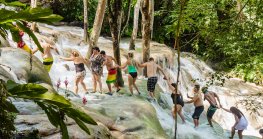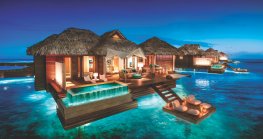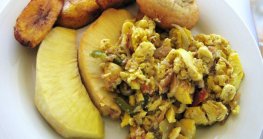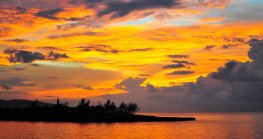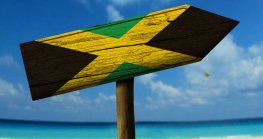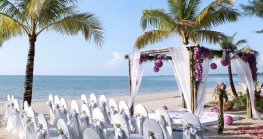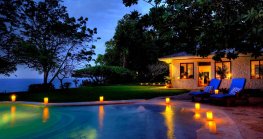Jamaica's best dive and snorkel spots
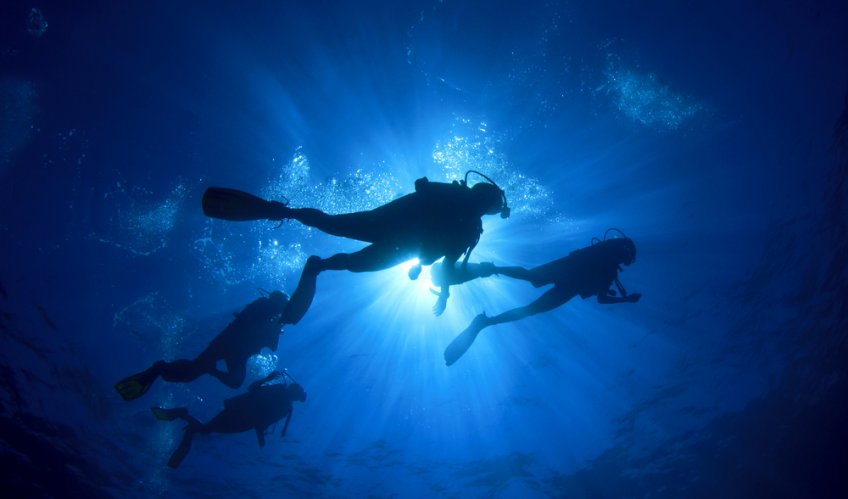
Some of Jamaica’s best dive and snorkel spots are easily accessible from your hotel.
Jamaica is a fantastic option for SCUBA diving and a great place to get certified, and best of all is that most hotels include snorkeling gear.
Many of us light adventurers have dabbled in snorkeling, taking a glimpse into the underwater world and marveling at the vibrant colors of the life happening down below.
Others take the plunge, literally, by getting SCUBA certified and making exploring the Caribbean Sea a part of their Jamaican vacation.
There’s nothing quite like it!
Discover Jamaica underwater
It’s been described as an unforgettable experience, floating and gliding among a whole new world as you‘re entranced by the sights all around to the soundtrack of your own breathing.
The island has an unusually high level of diverse coral and marine life and seasoned divers will appreciate the wide variety.
Negril
But perhaps Negril is home to the most enchanting of them all.You’ll be amazed at the colorful array of coral, sponges, and varieties of fish. Sea anemones reach out their soft and colorful tentacles as if to welcome you to their home.
Tiny striped banded coral shrimp are a delight to behold and sassy pistol shrimp will make their popping noises adding to the ocean rhythms under the sea.
Shallow coral reefs are hugely popular with snorkelers and one can even spot large stingrays and other sea life in the crystal clear waters close to shore.
Where to go
Jamaica’s many reefs create ideal spots for snorkeling in all of the major tourist areas.In Kingston, the popular Sunday destination of Lime Cay is a tiny island off the south coast which provides an excellent snorkeling excursion for the day.
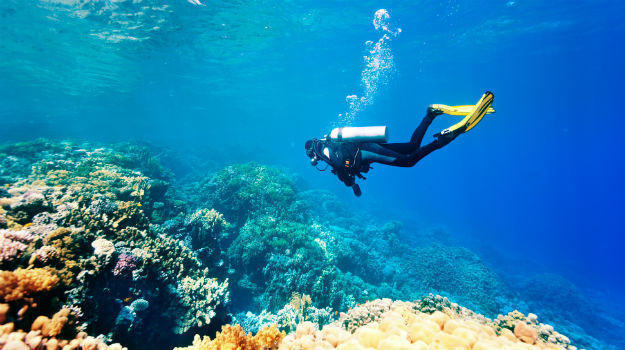
Meet Jamaica's beautiful coral reefs
Our local dive operators are licensed, professional, and passionate. They care for the environment and operate within strict rules to protect and preserve it.
They will teach you proper coral reef etiquette as part of their scuba diving tours, including no touching or harvesting.
Coral reefs protect the beaches from corrosion and provide food and shelter for thousands of underwater species and they take years to grow.
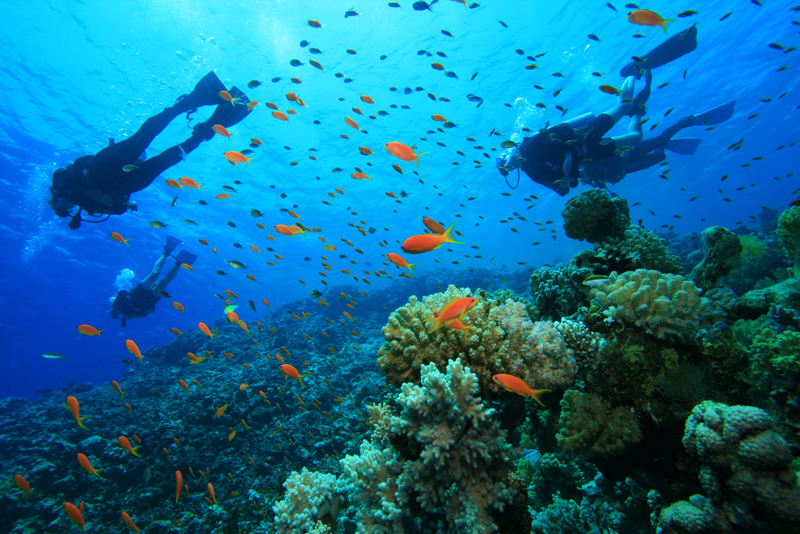
Diving lessons for beginners
Fret not beginners, you can arrive not knowing a thing and be experiencing your first full dive by the end of just one week.
Many hotels and dive shops offer beginner SCUBA courses and you can learn to dive in a few days if you’re a healthy, relatively good swimmer.
The many dive shops dotting our local beaches take you through professional courses and will hold their practice sessions in swimming pools to get you ready.
They also offer advanced diving for those who have moved beyond the beginner stage.
The Caribbean waters are warm and inviting and the ocean currents in most swimming spots along the North Coast are mild.
Diving will most likely occur in depths of 30-70 feet, giving you ample time and space to get up close and personal with smiling parrot fish and peaceful nurse sharks napping lazily in the sand.
Along the coast of Negril, in Long Bay especially, you’ll see airplane wrecks and sunken tug boats turned into artificial reefs and attractions for the fish.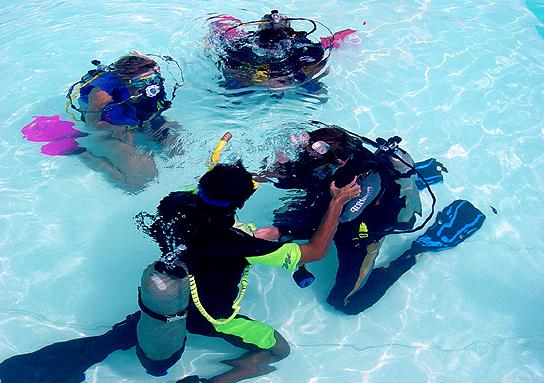
Safety warning
Always keep in mind that you can’t fly soon after diving due to decompression sickness from the shifting of altitudes between diving and taking to the air.
There are different suggestions from varying sources as well as whether you did a single shallow dive, multiple dives, or a deep dive. To be safe, give yourself a 24-hour window.
Best diving spots in Jamaica
While there are over 100 dive sites in Jamaica, some are more popular than others.
The Throne Room, Negril
The Throne Room in Negril offers a unique underwater cave experience that you just must try.
The entry is an 8-foot-wide, roughly 25-foot-long crack in the sea floor in 40 feet of water, leading to a 40-foot-wide chamber bottoming out at 65 feet.
As the ceiling crack is substantial, it admits plenty of light; and the 25-foot ceilings ensure plenty of space inside the cave.
The walls of the cave are covered with corals and large yellow sponges that extend from the floor to ceiling, decorated with tube and elephant ear sponges and inhabited by shrimp, while a nurse shark or two are sometimes found on the bottom.
At the rear of the cave, there is a chute that is approximately 12 ft by three ft, with delicate black coral growth.
Through a crack in the reef, you can see sponge, eels, octopus, turtles, barracuda, a variety of fish, stings rays, and snappers that inhabit the cave.
Outside the cave, the local waters are visited by sea turtles and sometimes a curious dolphin.
Port Royal, Kingston
Port Royal, Kingston is one of Jamaica’s most interesting dive locations due to its incredible history of shipwrecks and pirates.
This area was once known as “one of the wickedest cities in the world” for playing host to some of the most notorious buccaneers to sail the seas.
Due to the many shipwrecks that lie beneath the ocean, Port Royal is now home to an array of tropical fish. In addition to ships, you can explore the city which slid into the sea in the 1692 earthquake.
Depth is approximately 50 ft, with an outer reef drop-off of about 80 ft. Highlights of the area include the “Kim & Trader” lumber shipwreck and of course the famous pirate city sunken wall of Port Royal.
Those wishing to go diving in the sunken city will need to obtain special permission from Jamaican authorities.
This is probably best done through local dive operators who will have the most current and up-to-date information regarding rules about Port Royal.
Devil’s Reef, Ocho Rios
Devil’s Reef is known (among other things) for its scorpion fish, lettuce sea slugs, coral with different attractive colors, tunnels, caverns, and the nurse sharks that dwell therein.
The underwater ridge gently slopes down to about 65 feet, and from there drops off steeply to a sandy bottom at 130 feet.
Therefore, the upper reaches of the reef are suitable for Open Water divers, while the lower reaches require Advanced Open Water training.
The reef is encrusted with staghorn corals and black-ball sponges, with moray eels hiding in its cracks and crevices. The area is populated by barracuda, wrasse, spadefish, and snapper, with most of the fish action taking place at around 70 to 80 feet.
On this dive, the dive master will lead you through the low-profile reef where you can look down to the sandy bottom at 130ft (40m).
Down below, small groups of snapper swim around in the shallower sections but the schools of bogas and creole wrasse speed by, and a school of Atlantic spade fish will certainly tantalize you to come out to the deep to see more of the action.
Widowmaker’s Cave
Here you will see barracuda, parrot fish, black coral, and more, and you have two options when diving here.
You can swim down and enter the cave through the bottom, nearly 80 feet, and venture upwards through it to a small chimney exit about 30 feet deep.
Another option is to start the dive and enter it at the top, completing it by exiting out the bottom while making safety stops at the surface.
Both options allow you to see the same things, just give you different challenges for your diving adventure.
SS Kathryn Wreck
Off the coast of Ocho Rios, you will find the SS Kathryn Wreck. This WWII mine sweeper was purposely sunk to create an underwater artificial reef.
Home to many corals, sponges, and marine life, this wreck dive gives you the option to swim around and explore it or venture inside the wheelhouse to have a look around.
It’s a very popular dive, but not really for beginners.
The best time to dive in Jamaica
Between June to September, you will find diving conditions that are clear with calm waters and good visibility. Make sure to avoid the rainy season, which is from October to May.
The period from June to September includes the beginning of the hurricane season which offers some of the most spectacular conditions if a storm isn’t present.
Normally it is possible to dive all year round, you just have to watch mother nature as it changes often.
The water temperature in Jamaica ranges from 78 to 85ºF (26 to 29ºC) in Summer – (April-October)
75 to 78ºF (24 to 26ºC) in the Winter – (November-March)
Visibility: In the summer months (up to 125′) but can be limited to about 30′ in winter months.
© 2019 Jamaica Experiences All Rights Reserved






